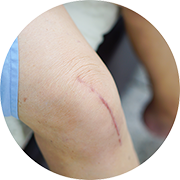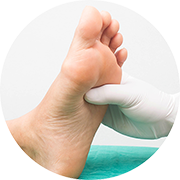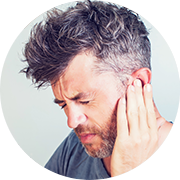

What could it be?
Pain After Shingles
Did you know that people who have had shingles (herpes zoster) before might continue to have burning pain, stabbing pain, or shooting pain even after the visible shingles have disappeared?
Shingles (herpes zoster) are caused by an infection with the varicella zoster (chickenpox) virus, resulting in an inflammation of nerve cells. Shingles can be very painful and uncomfortable as such. But it is even worse if the pain continues after the visible shingles have disappeared. This pain after shingles is called PHN, or postherpetic neuralgia. Doctors often have a difficult time diagnosing postherpetic neuralgia so patients actively need to tell their doctor if they had a shingles infection in the past and now have chronic pain in the affected area.
What Is Postherpetic Neuralgia?
Postherpetic neuralgia (PHN) is a complication of shingles. Shingles is also called herpes zoster, so postherpetic neuralgia is nerve pain (neuralgia) after (post) herpes zoster (herpetic). Although most cases of shingles clear up within a few weeks, the PHN pain can continue to last long after the visible shingles rash and blisters have disappeared, sometimes for months or even years.
What Causes Postherpetic Neuralgia?
Postherpetic neuralgia (PHN) is a type of neuropathic pain. It occurs if nerves are damaged due to a previous herpes zoster infection. Damaged nerves cannot correctly transmit signals from the skin to the brain. The result can be chronic pain that may persist for months or even years. The risk of PHN increases with age.2
What Are the Typical Postherpetic Neuralgia Symptoms?
The signs and symptoms of postherpetic neuralgia (PHN) are very often limited or localised to the area of skin where the shingles outbreak first occurred, often in a band around the patient's body, usually on just one side. This is why PHN is often referred to as being a type of localised neuropathic pain (LNP).1 The chronic pain associated with PHN can be described as 'burning pain', 'stabbing pain', or 'shooting pain'. Patients with PHN often have hypersensitive skin and cannot even bear the touch of clothing on the affected area, a condition doctors call allodynia.
What Can Patients Do?
With a correct diagnosis, early treatment might influence the course of postherpetic neuralgia (PHN) in a positive way. Do you have symptoms that you would describe as 'burning pain', 'shooting pain', or 'stabbing pain'? Do you have a very sensitive skin, e.g. is it painful for you to wear clothes on that area?
If you have chronic pain after shingles, and think that it might be PHN, please fill out the 'mypainfeelslike... questionnaire' and see your doctor at your earliest convenience. Be sure to tell your doctor that you had a shingles infection in the past and now have chronic pain in the affected area. You can read more about possible treatment options here.
Other kinds of pain
-
References
1. Mick G., et al (2012). What is localized neuropathic pain? A first proposal to characterise and define a widely used term. Pain Manage 2(1), 71-77.
2. Opstelten W., et al (2002) Herpes zoster and postherpetic neuralgia: Incidence and risk indicators using a general practice research database. Fam pract. 19(5):471-5.









